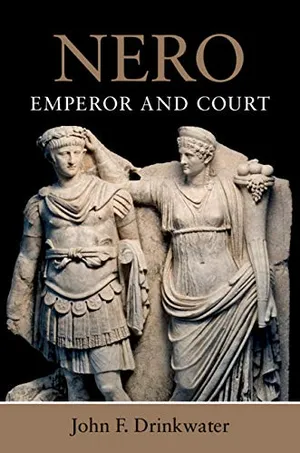The Colosseum in Rome draws close to eight million tourists a year, making it one of the world’s most-visited archaeological attractions. I could see the crowds converging on the magnificent first-century amphitheater as I headed across the street to a small park on a hillock. There was almost no one here, aside from a few young mothers pushing strollers along the pathways. A cluster of nuns passed by, and one of them pointed me toward a poorly marked gate at the base of the hill—the entrance to the Domus Aurea, or what’s left of it, anyway.
I had an appointment to meet Alessandro D’Alessio, who oversees the excavation and restoration of what must surely have been, in its day, the world’s biggest royal palace. Even before Covid-19, when the site was open to the public on weekends, few people came.
The emperor Nero commandeered many of the neighborhoods razed by the Great Fire of A.D. 64 to build a palace complex of staggering dimensions. The Domus Aurea, or Golden House, as the entire site was known, spread over almost 200 acres, covering the Palatine, Caelian and Esquiline hills of Rome. It was one of the big reasons that the Roman public suspected Nero of setting the fire himself. No modern scholar, and few ancient ones, believe he did, but you have to admit, the Domus Aurea seemed to give Nero a fairly good motive for arson.
As the first-century Roman historian Suetonius describes it, the Domus Aurea was a home fit for a megalomaniac. “His wastefulness showed most of all in the architectural projects,” Suetonius writes. “Parts of the house were overlaid with gold and studded with precious stones and mother-of-pearl. All the dining rooms had ceilings of fretted ivory, the panels of which could slide back and let a rain of flowers, or perfume from hidden sprinklers, shower upon his guests....When the palace had been decorated throughout in this lavish style, Nero dedicated it, and condescended to remark, ‘Good, now I can at last begin to live like a human being!’”
The Domus Aurea is nearly all gone now. The emperors who followed Nero swept it away in a frenzy, attempting to efface him and his works from Roman memory. One section remains, buried beneath the footpaths of Oppian Hill. The emperor Trajan built his famous baths right on top of it, filling Nero’s vast galleries with soil to support the weight of the baths. Trajan’s memory-expunging project succeeded: The crowds who flock to the Colosseum across the street have no idea that the Domus Aurea is footsteps away. Sic transit.
For the past six years, D’Alessio has been supervising archaeological excavation of the sprawling Domus Aurea’s 150-odd rooms. Even before Covid-19, the dig had halted while D’Alessio and his crew constructed an alternative drainage system to stabilize conditions inside. Completion of the project lies many years in the future.
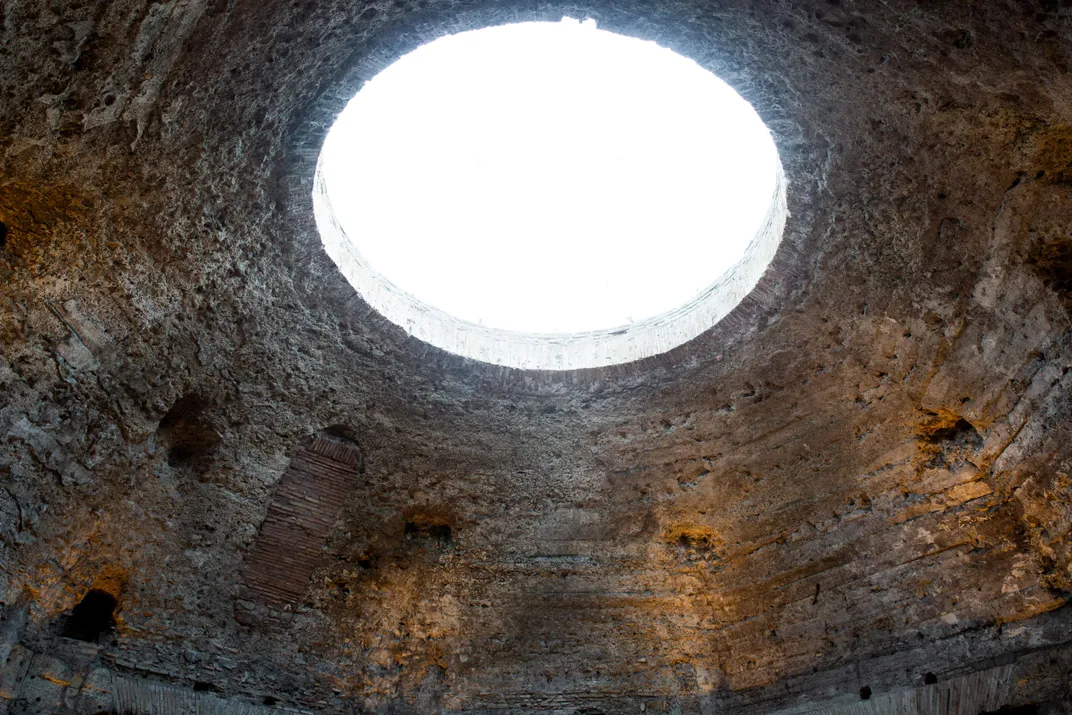
D’Alessio guided me from one high-vaulted gallery to another. Splendid frescoes line some of the walls, in a style we recognize from the ruins at Pompeii—but the distinctive aesthetic, later expressed across the Roman Empire, originated here, at the Domus Aurea.
A little farther on, D’Alessio led me to a room, its walls surfaced with roughly textured pumice, recreating a natural grotto. The space was dedicated to the nymphs, or female nature deities, whose cult of worship had spread throughout the empire. A micro-mosaic adorns the ceiling: It depicts in astonishing detail a scene from the Odys-sey. The ceiling mosaic surely influenced the Byzantines, who later plastered ceiling mosaics almost everywhere.
But the Domus Aurea’s boldest artistic innovation was surely its architecture. We know little of the two men who designed it—Severus and Celer. D’Alessio thinks Nero himself must have stayed closely involved in this grand-scale project. After all, this is the kind of thing, not ruling Rome, that turned him on.
High overhead, an open hole, or oculus, invited the sky in. Rome’s Pantheon uses the same device to magnificent effect, but Nero’s Octagonal Room did it first. Alcoves radiated off the main space underneath, inviting the eye to wander in unexpected directions. Precisely angled windows channeled sunlight to hidden niches. Light and shadow danced around the room, following the course of the sun.
“Pure genius,” says D’Alessio. “The Sala Octagonale is very significant for Roman architecture, but also for the development of Byzantine and Islamic architecture. It is a very important place for Western civilization. Nero left us masterpieces. We have a certain image of Nero from the ancient sources who were against Nero, and also, in our time, from the movies. The Church chose Nero as the representation of evil, but if you see what he made here, you get a completely different idea.”
* * *
Among history’s most durable memes, one ranks particularly high: a fleshy fellow in a toga, laurel wreath encircling his temples, standing among the columns of an ancient portico, while all around him, fire consumes the great city of Rome. He is not alarmed. Quite the contrary. He calmly plucks the strings of a lyre and, yes, even appears to be singing!
The meme says everything we need to know about this egotistical monster, his wanton indifference to human suffering and his pathetic delusions of artistic grandeur. He is at once childish and murderous. The story has been told and retold for almost 2,000 years, but it is Hollywood, not surprisingly, that has supplied the pictures in our heads. Pride of place must surely go to Mervyn LeRoy’s 1951 epic Quo Vadis, thanks to Peter Ustinov’s deliciously hammy Nero (the actor was nominated for an Oscar). “Look what I have painted!” shrieks Ustinov as he watches the Technicolor flames engulf his city.
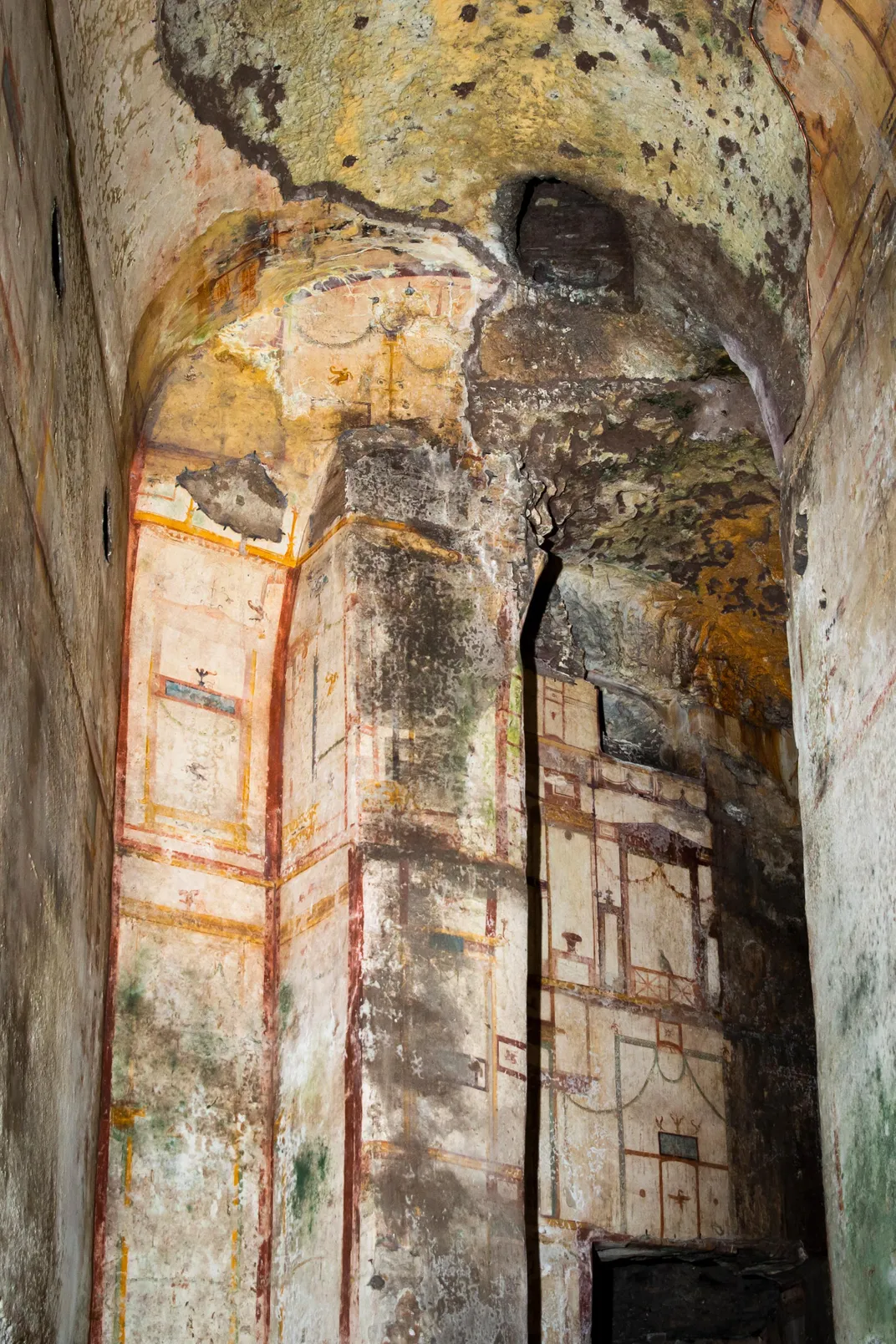
Ustinov calls for his lyre. He commences to pluck. “I am one with the gods immortal. I am Nero the artist who creates with fire,” he sings tunelessly. “Burn on, O ancient Rome. Burn on!” A panicky mob converges on the palace. “They want to survive,” explains Nero’s levelheaded counselor Petronius (portrayed by Leo Genn, also nominated for an Oscar). “Who asked them to survive?” shrugs Nero. Great cinema it isn’t, but it is terrific stuff all the same. And this is more or less the consensus Nero of history, set down first by the Roman historians Tacitus and Suetonius and etched deeper by the New Testament Book of Revelation and later Christian writings.
The man most responsible for Nero’s modern incarnation is the Polish novelist Henryk Sienkiewicz, whose Quo Vadis: A Narrative of the Time of Nero, appeared in 1895 and was the basis for the Mervyn LeRoy film and half a dozen other cinematic versions. The plot centers on the doomed love between a young Christian woman and a Roman patrician, but their pallid romance is not what turned the novel into a worldwide sensation. Sienkiewicz researched Roman history deeply; his Nero and other historical characters hum with authenticity. It was they, more than the book’s fictional protagonists, who vaulted Quo Vadis to runaway best-seller status, translated into over 50 languages. Sienkiewicz ended up winning the Nobel Prize in Literature in 1905.
Sienkiewicz plucks two strings that resonated loudly with his audience, and have done so ever since: Nero’s role as the emblematic persecutor of early Christianity (Poland is a deeply Catholic country) and Nero’s political tyranny (to Sienkiewicz, an ardent nationalist, Nero’s Rome stood in for czarist Russia).
* * *
But what if Nero wasn’t such a monster? What if he didn’t invent the spectator sport of throwing Christians to the lions in the Colosseum? What if he wasn’t the tyrant who murdered upstanding Roman senators and debauched their wives? Indeed, what if the whole lurid rap sheet has been an elaborate set-up, with Nero as history’s patsy? After all, we have no eyewitness testimony from Nero’s reign. Any contemporaneous writings have been lost. The ancient Roman sources we do have date from considerably after Nero’s suicide in A.D. 68. The case against Nero, then, is largely hearsay, amplified and distorted over two millennia in history’s longest game of telephone. Besides, no one really wants to straighten out the record. Who wants another version of Nero? He’s the perfect evil tyrant just the way he is.
A few lonely voices have come to Nero’s defense. In 1562, the Milanese polymath Girolamo Cardano published a treatise, Neronis Encomium. He argued that Nero had been slandered by his principal accusers. But Cardano was having his own problems with the Inquisition at the time. Sticking up for a guy who, among other things, supposedly martyred the first Christians for fun was not likely to help his own cause. “You put your life at risk if you said something good about Nero,” says Angelo Paratico, a historian, who translated Cardano’s manifesto into English.

Paratico’s translation, Nero, An Exemplary Life, didn’t appear until 2012, by which time historians had started taking another look at the case against Nero. Out of all the modern scholars coming to the emperor’s rescue, the most comprehensive is John Drinkwater, an emeritus professor of Roman history at the University of Nottingham. Drinkwater has spent 12 years poring over the charges against Nero, and dismantling them one by one. Scourge of Christianity? Nope. Urban pyromaniac? No again. And on down through matricide, wife-killing and a string of other high crimes and misdemeanors.
The Nero who appears in Drinkwater’s revisionist new account, Nero: Emperor and Court, published last year, is no angel. But one comes away with some sympathy for this needy lightweight who probably never wanted to be emperor in the first place and should never have been allowed to wear the purple toga.
Drinkwater is in line with the emerging trend of modern scholarship here, but he goes much further. Nero allowed a ruling clique to administer the Roman Empire, and it did so effectively, argues Drinkwater. Most of what Nero is accused of doing, he probably didn’t do, with a few exceptions that fall well within the grisly standards of ancient Roman political machinations. Drinkwater’s Nero bears little personal responsibility, and not much guilt, for much of anything. In the end, says Drinkwater, the “men in suits” got rid of Nero not for what he did, but for what he failed to act on. (On the other hand, Drinkwater believes that Nero probably crooned a few stanzas during the Great Fire, but we’ll get to that later.)
Drinkwater says many modern scholars have been trying to explain why Nero was so awful—“that he was a young man put in the wrong job and therefore he went to the bad. He was tyrannical not because he was evil, but because he couldn’t do the job. That’s more or less what I expected too. I was surprised because my Nero was not coming out like this. My Nero was not the out-and-out evil tyrant, because he was never really in control. Nobody here is tyrannical.”
The blame for saddling Nero with his unwanted destiny falls squarely on his mother, Agrippina the Younger, great-granddaughter of the emperor Augustus and a woman of boundless ambition. (Nero’s father, an odious aristocrat, Gnaeus Domitius Ahenobarbus, died two years after Nero was born.) Nero became Agrippina’s instrument for conquering the man’s world of Rome.
She moved first to disrupt the planned nuptials of the emperor’s daughter Octavia, so that Nero could marry her. The emperor at the time was Claudius, easily swayed. Agrippina’s improbable little lie—that Octavia’s fiancé had committed incest with his sister—proved toxic enough to torpedo the wedding. Readers of Robert Graves’ picaresque and hugely popular Claudius novels are unlikely to forget the sexual gymnastics of Messalina, Claudius’ notorious wife. In the end, Messalina’s antics brought her down, leaving a vacancy in the marriage bed that Agrippina filled in A.D. 49. Shortly thereafter, Claudius adopted Nero as his own son, making Nero a legitimate claimant to the throne, alongside Claudius’ natural son Britannicus. And finally, in A.D. 53, Nero married Octavia. The stage was set. Agrippina had managed everything with steely efficiency.
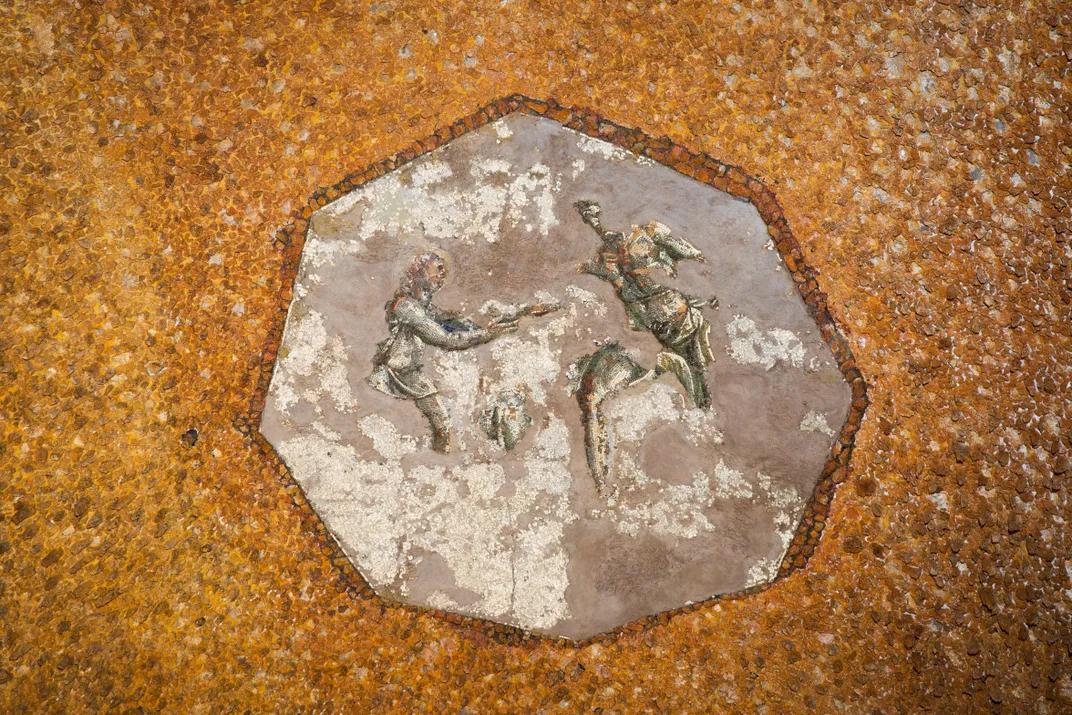
The Roman historian Tacitus is not always reliable and he is certainly not unbiased, but his portrait of Agrippina in her hour of triumph feels right today: “From this moment the country was transformed. Complete obedience was accorded to a woman—and not a woman like Messalina who toyed with national affairs to satisfy her appetites. This was a rigorous, almost masculine despotism.”
More power to her, says Drinkwater, who is a big fan. “I think the Roman Empire lost out by not having Empress Agrippina. Given half the chance, I think she could have been another Catherine the Great. I admire her intelligence, her perspicacity. She was one of the few people who knew how the system worked. For example, Claudius is often reproached for killing a lot of senators, and he did, but when Agrippina comes along, you get very little of that. The modern thinking is that she worked well with the senate. If she had been given more time, she might have been able to establish a precedent of an active executive woman in Roman politics.”
Claudius died in A.D. 54 after eating a mushroom that was either bad or poisoned—Tacitus and the ancients say poisoned on Agrippina’s orders, and while there’s no hard proof, nobody then or now would put it past her. In either case, Agrippina had greased the succession machine so that Nero, just 17, slid smoothly onto the throne following Claudius’ death, past the slightly younger Britannicus.
We know very little about the teenager who found himself absolute ruler of a sprawling, multiethnic empire. He had been educated by the great Stoic philosopher Seneca, but Nero was clearly no stoic. We do know, however, that the Roman people welcomed their new emperor enthusiastically and held high expectations for his reign.
Things started out well, mostly because Nero was more than happy to allow three highly capable people to steer the ship of state: Seneca, Burrus, the levelheaded commander of the Praetorian Guard, and, of course, Agrippina. Behind them stood Drinkwater’s “men in suits,” the senators, well-trained freedmen and ex-slaves who made up a kind of civil service. In Drinkwater’s account, the roster of Team Nero shifted around somewhat during the 14 years of his reign, but it oversaw the empire competently.
For his part, Nero gave himself over to the pursuits that mattered most to him—chariot-driving, singing, poetry and playing the cithara, a stringed instrument like a lyre but more complex and much harder to master. Nero was a thoroughgoing philhellene—a lover of Greece and its sophisticated culture. He had little of the Roman appetite for blood and conquest, which makes him look far more appealing to us than to the Romans.
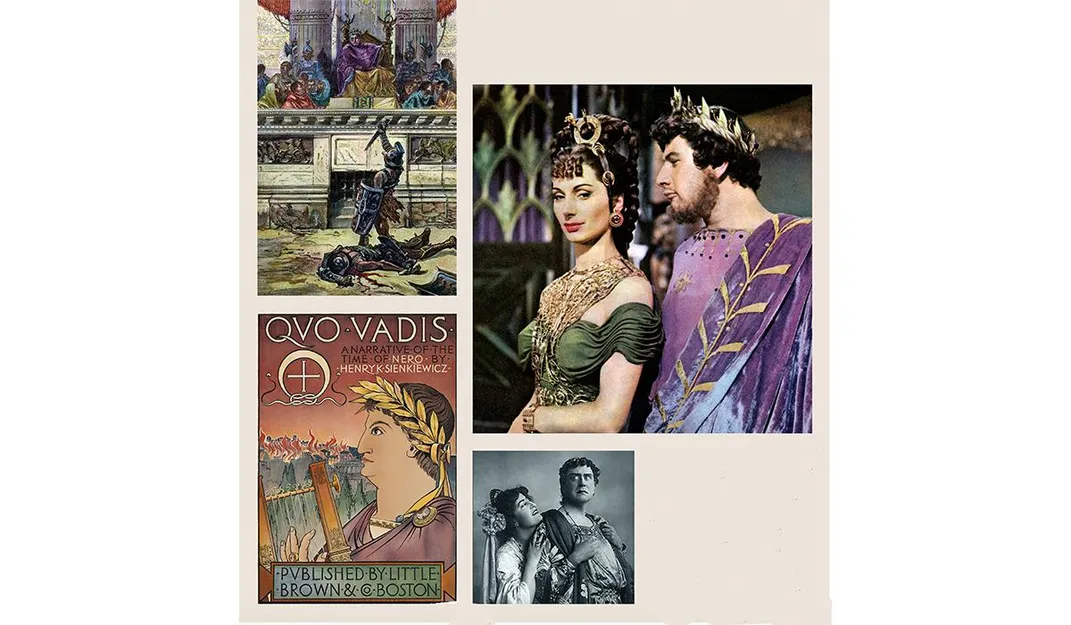
The Nero meme leaves the impression of an effete dilettante, confident in his own genius only because nobody had the guts to tell him otherwise. This is wrong on several counts. Suetonius tells us that Nero worked very hard to get good at singing. “He...conscientiously undertook all the usual exercises for strengthening and developing his voice. He would also lie on his back with a slab of lead on his chest, use enemas and emetics to keep down his weight, and refrain from eating apples and every other food considered deleterious to the vocal cords,” Suetonius reports, adding cattily that Nero’s voice remained “feeble and husky.”
Even the poetry Nero wrote himself was apparently pretty good; the Roman poet Martial tells us so. We have selections of it, and they don’t sound anything like the grandiloquent tripe that generally comes out of his mouth in the movies. Nero cannot be dismissed as a mere dabbler: He took his hobbies seriously—too seriously, in fact, for a Roman establishment that liked its emperors to make war, not art.
Nero was an accomplished athlete as well. Suetonius is impressed that Nero can pilot a four-camel rig around the racetrack. In other references, we find Nero at the reins of a ten-horse chariot. That was the ancient Roman equivalent of a Formula One car. Nero won races in it. “If Nero could do that, he is no fool. He is intelligent, he is fit. On his own terms, he is to be taken seriously and he’s not to be projected as a clown,” Drinkwater concludes.
Those qualities made the young Nero very popular with the common man. He had an exuberant personality and enjoyed being out in public. He was no snob and remembered the names and faces of people up and down the social ladder. All in all, he comes off as a fairly likable young fellow.
OK, sure, there were casualties. But let no one be overly troubled by the fact that Nero’s brother Britannicus turns up dead a year after Nero takes power. “He was doomed from the start,” Drinkwater writes. Political murder was an accepted tool of governance and made few waves in first-century Rome, provided it was not overused. Everybody did it, not just Nero.
“You get the impression that people are being murdered all the time,” Drinkwater told me. “But if you start adding up the Neronian murders, there are not that many of them.
“Even the thing that people point to later as the real blood bath, just after the Pisonian conspiracy of A.D. 65, if you tot up the numbers, they are still quite small—20 or 30. In terms of 16th- or 17th-century English politics, that’s nothing. It’s a surgical strike! I go bananas about this supposed ‘reign of terror.’ For those involved it was dreadful, and it’s not a society that one would have liked to live in, but it’s also not that dangerous for politicians. If you overstepped the mark, you paid the penalty, but most people knew where the boundaries were.”

Nero’s problems with his mother started early on, when he fell in love for real. Not with Octavia, his wife, alas. Nero’s arranged marriage to her brought neither love nor children. Instead, Nero fell hard for a lowborn freedwoman named Acte. He even flirted with the idea of marrying her, a project Drinkwater calls “absolutely silly.” But it is Agrippina’s disapproval of her son’s comportment—not just with his mistress but a new gang of friends his own age—that plants the wedge between them. He’s coming into his own and his mother is no longer the partner she intended to be. She’s an impediment.
Before long, Nero strips Agrippina of her personal security detail and kicks her out of the palace. As in much ancient Roman history, the coinage tells the tale: first Agrippina and Nero stop appearing together on the heads side of Roman coins and she gets flipped to the tails side; then she disappears from coins altogether.
Things go downhill. When Nero falls in love again, this time with his adored future wife Poppaea, Agrippina again tries to come between them. Are these the real reasons Nero has his mother killed in A.D. 59? It seems like a stretch, but none of the ancient sources can explain to anyone’s satisfaction why Nero commits this atrocity. Even by the grim standards of ancient Rome, you don’t kill your mother. Matricide will become a defining moment for the authors of the Nero meme, when he is first fitted for his role as history’s monster.
The story of the murder verges on the burlesque. Nero invites his mother to a kind of reconciliation party at his country villa in Baiae on the Bay of Naples. He graciously provides a galley to ferry Agrippina home after the party, but the boat is rigged to come apart at sea. Agrippina is meant to drown, but she is an unexpectedly strong swimmer and manages to make it safely back to shore. After some comical dithering, a henchman is sent to dispatch Agrippina the old-fashioned way, with a sword.
“When you look at the evidence here, you can play it any which way,” says Drinkwater. “The great joy of doing ancient history is taking the bits you’ve got and putting them together—let’s be honest—more or less the way you feel. I got to know Nero, and I always felt that he couldn’t have done this to his mother in cold blood. They stayed close even after the breakup over Acte and the squabble over Poppaea. Down to her death, Agrippina is not stripped of her imperial titles. And the actual story of her death is so confused, overdramatic and elaborated that you could take the whole lot together and suggest that he didn’t intend to kill her himself, but that after the shipwreck—or the accident—others seized the opportunity to get rid of her themselves.”
Here Drinkwater directs the jury’s attention to Seneca, designated by history as the virtuous foil to Nero, the frivolous killer. Seneca’s noble suicide six years later (at Nero’s not-so-polite invitation) became a favorite theme for European painters. Tacitus puts a parting dig at his executioner in Seneca’s mouth: “After a mother’s and a brother’s murder, nothing remains but the destruction of a guardian and tutor.”
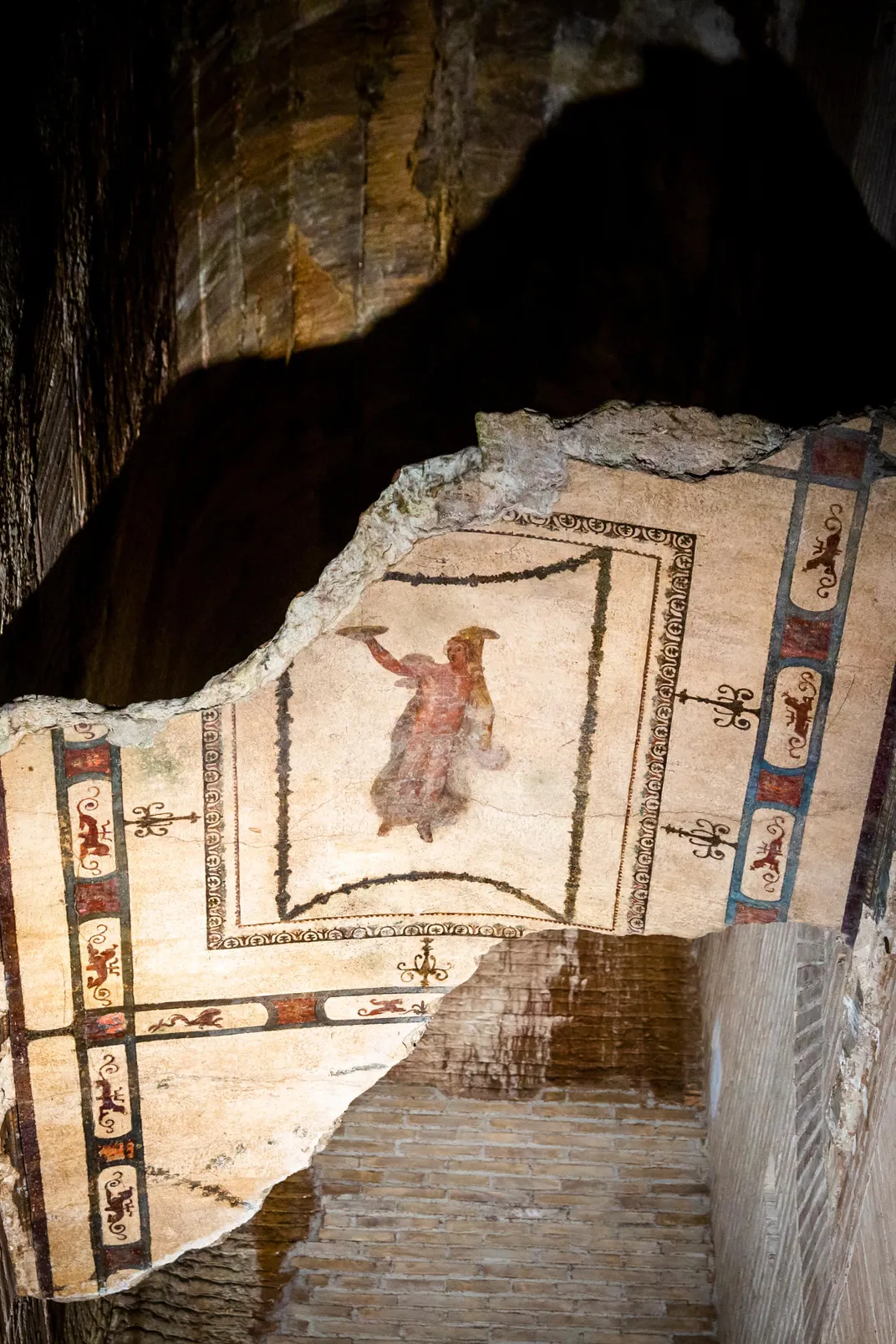
Balderdash, says Drinkwater. Seneca was caught up in the bloody aftermath to Piso’s conspiracy, and it’s fair to say he knew about the conspiracy beforehand, even if he wasn’t a plotter himself. “If Seneca lived today, he would have been a TV guru, saying the right thing on his chat program. He had to survive in quite a difficult world, so he could write one thing and do another. One thing that recent biographers have made of him is that, when push comes to shove, he lacks moral courage. Good luck to him, but he doesn’t come out well at the end.”
OK, you might say, perhaps we can give Nero a pass on his brother and even his mother. (I haven’t mentioned his wife Octavia; she went too.) But what of the fire and what of the fiddling? They are the building blocks of the Nero legend. They are also among the least solid historically.
On July 18, A.D. 64, in the tenth year of Nero’s largely successful reign, a fire broke out in the Circus Maximus. The fire burned for nine days, destroying the better part of the city as it spread.
Nero wasn’t at home when the fire ignited. He was vacationing at Antium, today’s Anzio and another of his favorite getaways. But when news of the fire reached him, he hurried straight back to Rome and took charge—effectively—of firefighting efforts. He moved quickly to aid the victims. And in the fire’s aftermath, he introduced legislation to make Rome less vulnerable in the future.
“For the relief of the homeless fugitive masses he threw open the field of Mars...and even his own gardens,” writes Tacitus. “Nero also constructed emergency accommodation for the destitute multitude. Food was brought from Ostia and neighboring towns, and the price of corn was cut to one-quarter sesterce a pound. Yet these measures, for all their popular character, earned no gratitude. For a rumor had spread that, while the city was burning, Nero had gone on his private stage and, comparing modern calamities with ancient, had sung of the destruction of Troy.”
Perhaps the rumor wasn’t even true. The evidence is murky. Drinkwater believes that it was true, however, and that Nero sang his head off. But Drinkwater doesn’t see Nero’s singing the way history has depicted it—as proof of Nero’s cruel indifference to the plight of his people. “I think anyone with Nero’s artistic susceptibilities would have reacted the same way. He’s written an epic on the sack of Troy and we know the Greeks burned Troy. So it wouldn’t surprise me if he goes to the modern Farnese Gardens, looks down and lets loose. He’d already done all he could to fight the fire, so he just responded to the flames. But if we accept that he did that, he leaves himself open to the charge of arson.”
A more nuanced view of Nero’s response to the Great Fire receives strong support from a new book by Anthony Barrett, professor emeritus at the University of British Columbia at Vancouver. The historian’s Rome Is Burning: Nero and the Fire That Ended a Dynasty, draws on little-known Italian archaeological studies to reconstruct the tragedy and its consequences. While Barrett concedes that the extent of the devastation is almost impossible to pin down—there are no casualty figures, and we don’t know the name of one person who died in the fire—he finds it likely that the scale of human suffering was great. “The poor lived in high-rises that were notoriously dangerous—it is reasonable to surmise they were anywhere from five to eight stories high,” says Barrett. “The people who lived there would have been trapped.”
Barrett largely agrees with Drinkwater about the singing. “We have a contemporaneous account by a witness to the Great Chicago Fire of 1871 who speaks of its ‘great beauty,’” says Barrett. “J. Robert Oppenheimer recited the Bhagavad Gita after witnessing the first explosion of the atom bomb. Scipio Africanus quoted Homer on seeing the destruction of Carthage. These are very human reactions to tragedy. Only in Nero is it seen as evil.” Like Drinkwater, Barrett takes a dim view of the charge that Nero set the fire: “The case against Nero is very flimsy.”
Still, Nero’s musical response to the conflagration was indisputably a mistake. A few years later, Nero’s “artistic susceptibilities” would get him in even deeper trouble. If a modern well-wisher could send one word of counsel back through time, it would be this: “Dear Nero, please stop singing.”
* * *
The Domus Aurea project was also a mistake, criticized in its day as a lot more house than any absolute monarch would ever need. But it may be that Nero never meant for this city-within-a-city to be his purely private playground. “The Emperor wanted to make its pleasures available to the people,” David Shotter, a historian, asserts in his 2008 biography of Nero. “Recent excavations near the Arch of Constantine and the Colosseum have revealed a colonnaded pool, the stagnum Neronis, which imitated Nero’s lake at Baiae and the stagnum Agrippae on the Campus Martius. The implication of this appears to be that Nero intended that his new house and the rebuilt city of Rome should be one—the home of the people and of himself, their Emperor, Protector and Entertainer.” Shotter goes on, “those looking for signs of Nero’s supposed madness will not find it here; his contribution to Roman construction should not be dismissed or underestimated in the shallow manner of many of his contemporaries. Here, writ large, is Nero the artist and popular provider—almost certainly the way in which he would have wished to be remembered.”
If Shotter is right, why did Tacitus and Suetonius write so disparagingly about the Domus Aurea? Why castigate Nero altogether? Who started this historical pile-on? How did it go viral? There are several culprits, but Drinkwater and others blame the Flavians first.
The year following Nero’s death in A.D. 68 is known as the Year of Four Emperors, which tells you most of what you need to know. After much turmoil, Vespasian, the first of three Flavian emperors, took control (Vespasian was followed by his two sons, Titus and Domitian). Before them, the empire had known only one ruling family. Augustus founded the Julio-Claudian dynasty in 27 B.C., and it lasted for almost 100 years, until the death of Nero. The Julio-Claudians stood for stability. For legitimacy. They stood, in short, for Rome itself.
“The Romans were descended from Aeneas of Troy, and Aeneas was the ancestor of the Julio-Claudians. So history would come to an end when this dynasty ruled Rome and ruled the world, because Jupiter said so,” says Drinkwater. “That works very well while the dynasty is going, but what happens when it stops? How do you transfer all that credit from one dynasty to a totally different family?
“The amazing thing is, the Flavians managed to pull this off, but one way to do this was to destroy the memory of what came before. So they said that the Julio-Claudians were worth displacing because they had become corrupt. And the more you can denigrate them, the better. The anti-Neronian tradition came into play very quickly. When Tacitus and Suetonius came along later, they were working within a tradition of historiography that had already been well established.”
Which brings us to the Christians, who added their own grievances to the Nero-bashing narrative. It must be conceded upfront: Nero did kill Christians. Simmering public resentment over the Great Fire put enormous pressure on the government to find a scapegoat. Early accounts make it unclear whether Christians were persecuted for their religious beliefs or simply as an outsider group—Drinkwater says the latter—but they were easily framed for arson. Whatever he was up to, Nero wasn’t trying to stamp out the nascent faith, which, at this point, was taking shape more in the Middle East than in Rome.
The Christians whom Nero did kill were never thrown to the lions before a crowd of baying spectators in the Colosseum, as the story goes. For one thing, the Colosseum wasn’t even built yet. More to the point, from what we know, Nero had little taste for the kind of blood sport we associate with popular Roman entertainment. As a philhellene, he would much rather watch a good chariot race than see two armed men slice each other up. When protocol demanded that he show up at gladiatorial games, Nero is said to have remained in his box with the curtains drawn. He took some heat for this. It was considered insufficiently Roman of him.
The Christians Nero executed for setting the Great Fire were mostly burned in his own gardens, which conforms to the standard Roman legal practice of fitting the punishment to the crime. And that appears to have been the end of it, at least at the time. The public was appeased and the Christians of Rome stayed silent. “Persecution isn’t mentioned at all in the early Christian sources,” says Drinkwater. “That idea comes up only much later, in the third century, and is fully accepted only in the fourth century.”
When the idea finally surfaces in Christian polemics, it appears with a vengeance. The Book of Revelation was interpreted to cast Nero as the Anti-Christ: The numerical equivalents of the Hebrew letters that spell “Neron Caesar” come out to 666—the “number of the beast.” Do with that what you will. Lactantius, a tutor of the Christian Emperor Constantine’s son, wrote On the Deaths of the Persecutors in the early fourth century. He has this to say: “Nero, being the abominable and criminal tyrant that he was, rushed into trying to overturn the heavenly temple and abolish righteousness, and, the first persecutor of the servants of God, he nailed Peter to the cross and killed Paul. For this he did not go unpunished.”
Never mind that Nero has an alibi for Peter’s death: There’s no evidence Peter was ever in Rome. Paul was there, from A.D. 60 to 62, and he may even have been killed there, but that was well before the so-called “Neronian persecution.” But none of that matters much anymore. Early Christians and the Flavians set their stamp on the written record early, and they held a grudge.
Nero’s increasingly beset final years were marked by a few things he should have done and one big thing he shouldn’t have done. Until the latter part of his reign, Nero confined his crooning mostly to a small audience of invited guests. As time wore on, however, Nero grew bolder. His living room no longer provided a big enough stage. He had always craved applause. He was addicted to showbiz.
Early in the year A.D. 64, Nero went to Naples, a city he loved for its Greek roots and theatrical culture, and performed in public for the first time. He sang and accompanied himself on the cithara in a kind of Bob Dylanesque, singer-songwriter one-man show. The crowd went wild, and Nero came away exhilarated and wanting more. He repeated the performance, this time in Rome itself.
Given all the horrendous things Nero was accused of doing, it’s bizarre that a little musical comedy ranked so high on his list of crimes. And yet that is the way the Roman upper classes saw things. In A.D. 65, Roman senator Gaius Calpurnius Piso organized a ham-fisted plot to kill Nero. Among the conspirators’ chief complaints were Nero’s acting and singing in public. The plot was easily undone, but before he went to his death, one of the conspirators, a Praetorian guard, Subrius Flavus, told Nero to his face why his “devotion turned to hatred.” Nero was a matricide and an incendiary, said Flavus, but he was also...an actor.
Much about ancient Rome seems recognizable to us. That does not. “Entertainers were low status, and in a society where status was very important, for a high-status person to project themselves as low status was not acceptable,” says Drinkwater. “It shook the foundations of society.”
Nonetheless, near the end of his reign Nero put together the ultimate roadshow. One of the things expected of a proper Roman emperor was official travel to the provinces. Nero never liked to travel and for years refused to budge. When he finally agreed to leave Italy, he arranged to play the festival circuit in subjugated Greece (he had asked the Greeks to squeeze all their major festivals into one year, and, not surprisingly, they obliged). Shotter, the biographer, tells us Nero won every contest he entered, along with a few he did not. When he returned to Rome in A.D. 67, he carried back 1,808 first prizes. So overcome was Nero by this outpouring of love that he liberated Greece (Vespasian promptly unliberated it). Roman public opinion did not react badly to Nero’s foreign tour. Apparently, what happens in Greece stays in Greece.
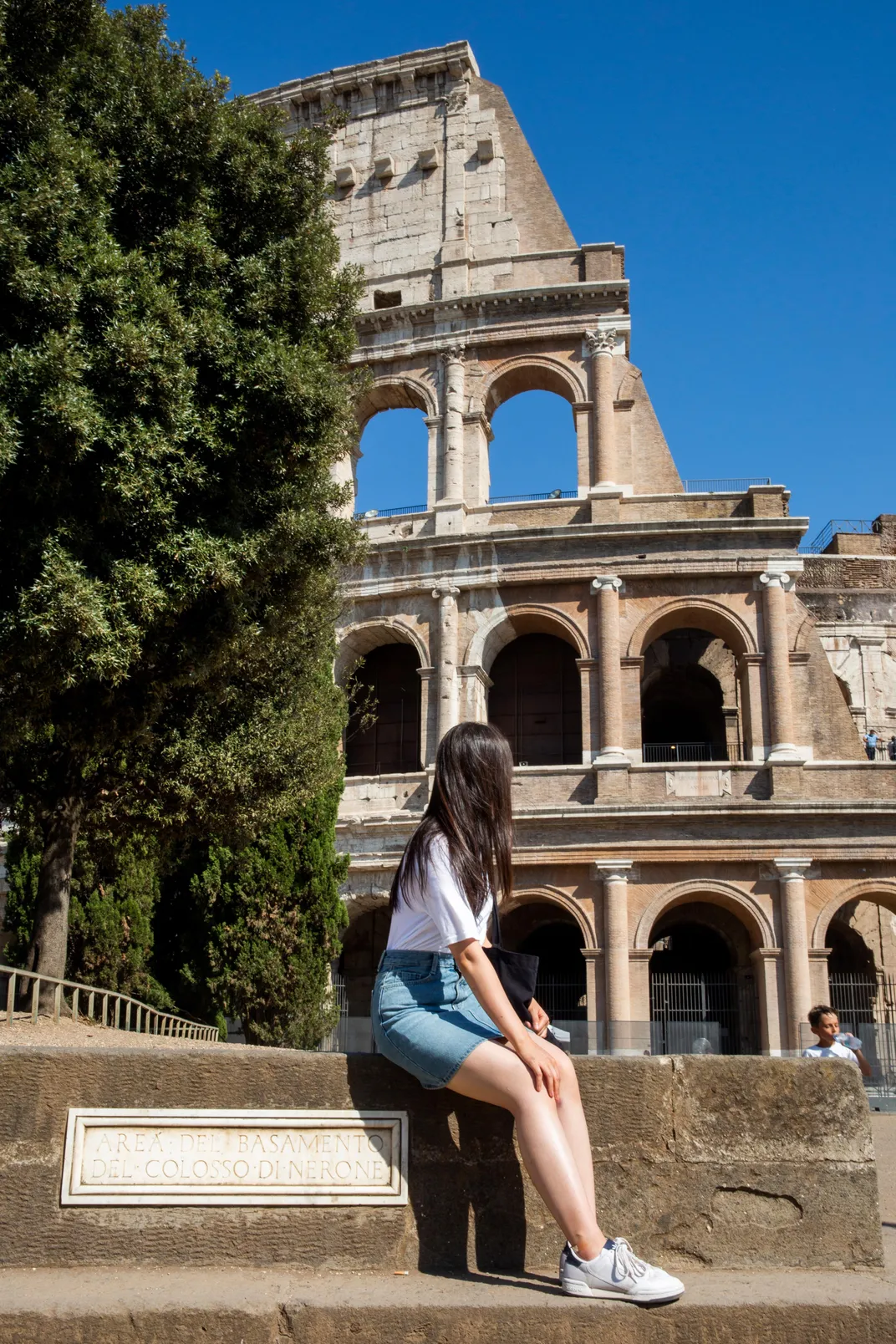
Nero’s end crept up on him slowly and from afar. There was no immediate crisis of state that required his ouster. Some historians argue that Nero had depleted Rome’s treasury and that the empire was desperately short of cash. Drinkwater disagrees. The empire’s frontiers were mostly quiet: An uprising in Britain had been put down. Titus, the future emperor, was in the process of extinguishing a rebellion in Judaea. The crisis that did arise should have been merely a tempest in a teapot. A firmer, less diffident emperor than Nero might have flicked it away. Nero watched as it slowly gathered momentum, and he sat there, paralyzed, as it rolled over him.
In the spring of A.D. 68, a Gallic official, Julius Vindex, rose up not against Rome, he said, “but against Nero.” The reasons were vague, the usual grab bag of crimes—matricide, acting, that sort of thing. Vindex could never hope to sit on the throne himself—he was a Romanized Gaul, for one thing—so he enlisted someone who could, a middling Roman patrician named Galba.
“In most popular works, you get the notion that the whole empire was against Nero and the army revolted. That’s not true,” says Drinkwater. “Clearly what the establishment thought would happen was: Nero would go up there, he’d lead his troops, end of Vindex, end of Galba, wonderful!”
Militarily, Vindex never posed a real threat to Nero or to Rome. Few of the important commanders in Gaul, Germania and the East supported Vindex. But Nero temporized, effectively signing his own death warrant. By the time Vindex was routed at the Battle of Vesontio, the whole empire was somehow in play. “Nero had done nothing. The establishment had seen the future, hadn’t they?” says Drinkwater. “It’s not the army that turns against him, it’s the men in gray suits.”
Nero fled Rome for the villa of his friend Phaon, four miles from Rome. Here, on the 8th of June in the year 68, Nero read the news that the Senate had declared him hostis—an enemy of the state. Suetonius has him wavering irresolutely before hearing the approach of cavalry and plunging a dagger into his throat.
It is Suetonius, too, who has given us Nero’s infamous last words: qualis artifex pereo—“what an artist perishes in me!” Historians still debate exactly what Nero meant by this, but it is often taken as a final expression of Nero’s self-deluded conceit. As such, it is the kind of operatic finale that richly satisfies all the haters.
But there’s a different way of looking at it. Not that he was a great artist, perhaps, but that he was undoubtedly a committed one, and it is the artist, not the half-hearted emperor of Rome, who perishes here. “The one major figure who we certainly know was never allowed a fair trial under Nero was Nero himself,” Drinkwater concludes.
Two thousand years later, Nero is finally getting his day in court.
Nero: Emperor and Court
This book portrays Nero, not as the murderous tyrant of tradition, but as a young man ever-more reluctant to fulfil his responsibilities as emperor and ever-more anxious to demonstrate his genuine skills as a sportsman and artist.
A Note to our Readers
Smithsonian magazine participates in affiliate link advertising programs. If you purchase an item through these links, we receive a commission.
/https://tf-cmsv2-smithsonianmag-media.s3.amazonaws.com/filer/a2/0b/a20b2bc3-eb0a-4838-8b39-a451b04a8bbb/mobile_nero.jpg)
/https://tf-cmsv2-smithsonianmag-media.s3.amazonaws.com/filer/a5/8a/a58af5ed-e949-45c9-b003-e0bcc238186a/nero_opener.jpg)


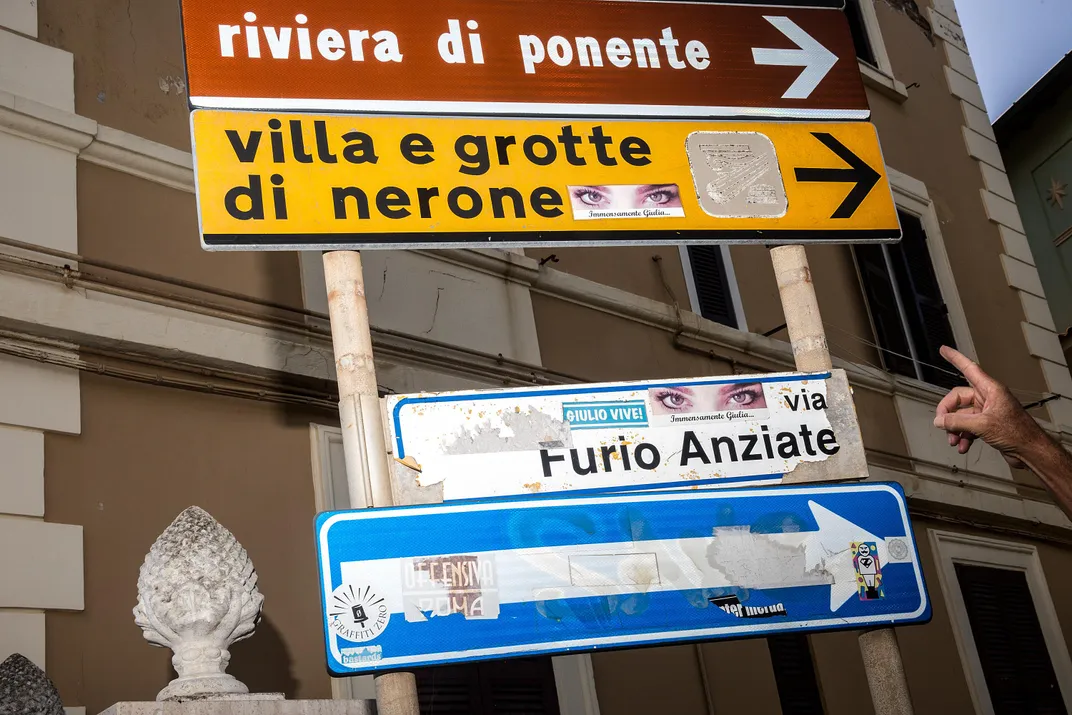
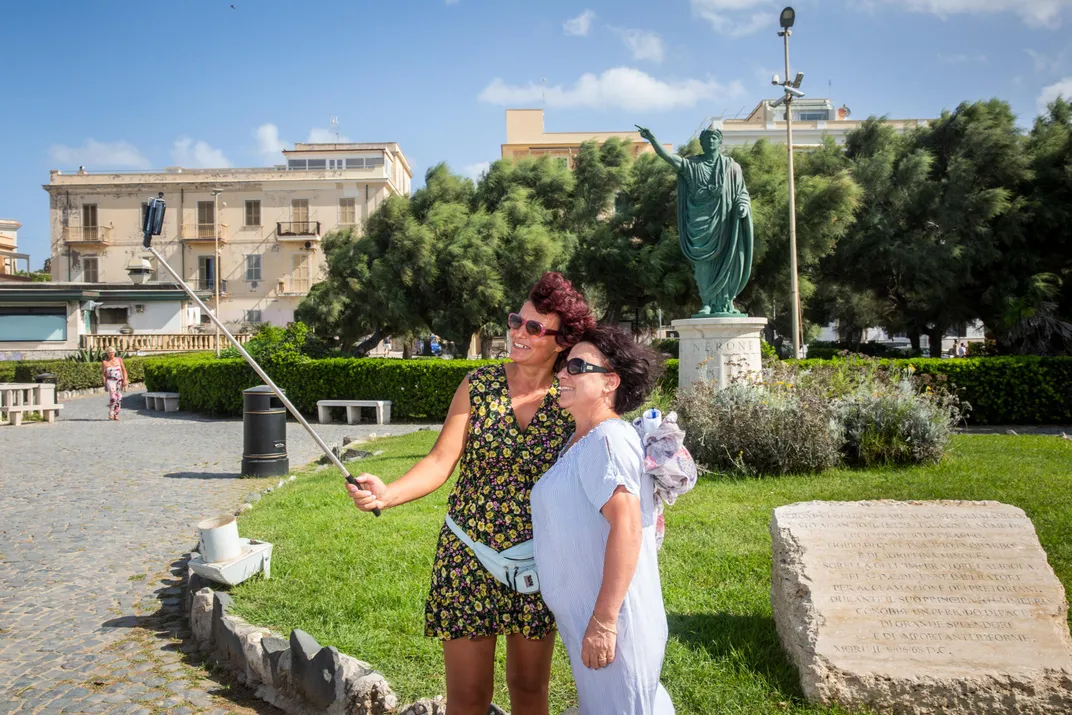
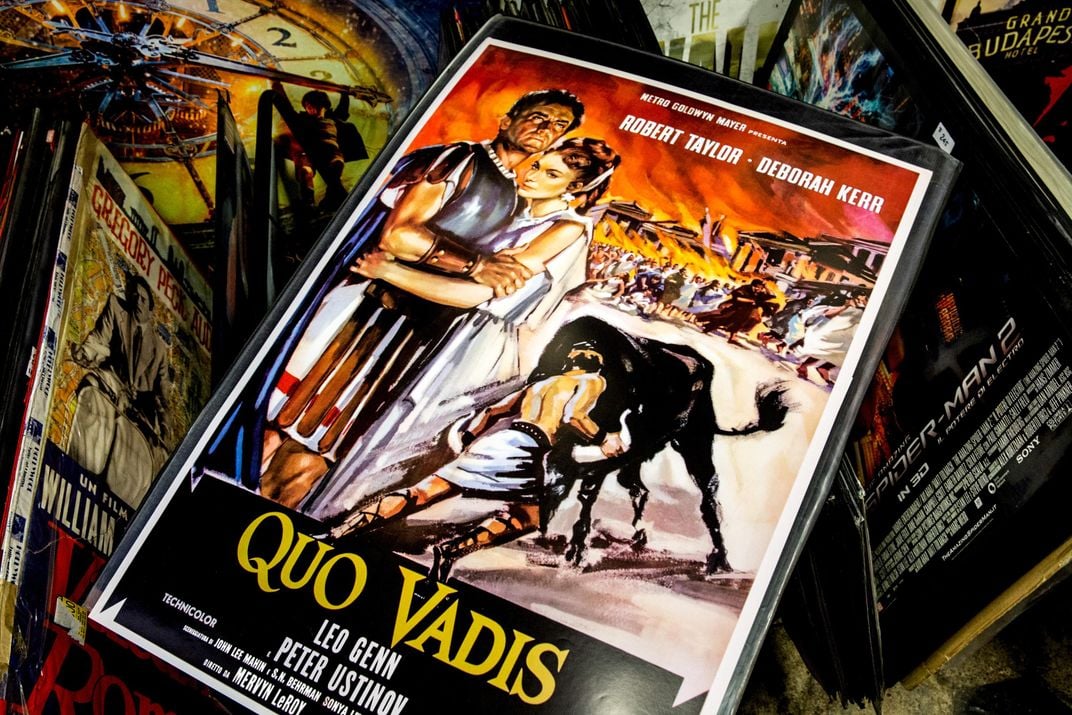

/https://tf-cmsv2-smithsonianmag-media.s3.amazonaws.com/filer/53/7a/537ab691-fe21-4f90-a27d-2a4b256f8a2f/slides_3.jpg)

